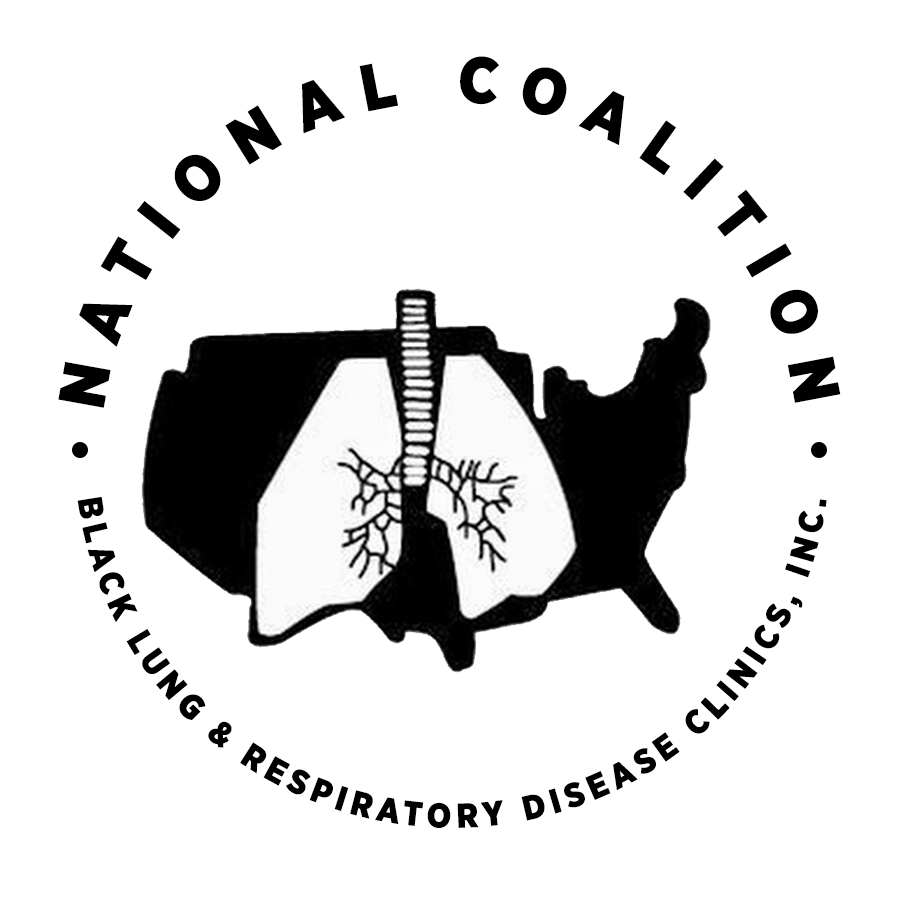Who We Are
The National Coalition of Black Lung and Respiratory Disease Clinics, Inc. represents Black Lung Clinic Programs in fourteen (14) states. The Program is dedicated to quality comprehensive care for victims of Coal Workers Pneumoconiosis (CWP) or “Black Lung” disease, workers at-risk for respiratory disease, and others with pulmonary impairment. In 2009, Program clinics offered medical services to 31,770 users with medical encounters totaling 110,368, benefits counseling encounters totaling 22,100 and community outreach encounters totaling 84,365, for a grand total of 216,833 encounters.
Black Lung is a debilitating lung disease. Coal miners are exposed to excessive levels of respirable dust generated by the mining, transport, and processing of coal. Black Lung has been identified as the most serious occupational health threat to the nation’s mining workforce. With an increased demand for the energy produced by coal at a lower cost, it is our contention that workplace practices will suffer and higher levels of respirable dust will be inevitable. Even with consistent dust controls in place, “practical limits” still exist for the containment of the dust. There has been no real evidence of any decline in the prevalence of Black Lung disease nor is there reason to anticipate a decline in the foreseeable future. If we intend to meet the increased demand for coal, then we must also consider the fact that the number of incidences of Black Lung disease among miners will increase as well.
The black lung and respiratory disease clinics in our coalition have highly trained staff who are experts in the diagnosis, treatment, and rehabilitation of patients with lung disease from coal mine dust exposure, as well as other occupational exposures. This is important since this information is often used in legal proceedings when patients apply for various types of compensation. They also understand the different types of specialized chest imaging tests and schemes for interpretation that are only used for the evaluation and diagnosis of occupational lung disease.
Many miners come to our programs with a diminished capacity to work. They have limited ability to physically and/or financially provide for their families and themselves. Our programs are uniquely qualified not only to recommend a specific treatment and rehabilitation plan for each patient but also to provide assistance to miners in understanding their rights, their restrictions and the process required to file a successful claim for compensation since many are entitled to compensation to ameliorate their medical conditions.
With the energy needs of our country being a priority and with coal being an abundant alternative source, the future of men and women who mine coal must also be in the forefront.
The primary goals of the Coalition over the next five years include:
Building a stronger unified national voice
Creating a stronger public voice for respiratory disease issues
Strengthening individual clinics and broadening the scope of the knowledge of the NCBLRDC
There are many different kinds of occupational lung disorders that depend on the type of particle that you inhale. Additionally, the amount and frequency of exposure can also affect the severity of your disorder. Sometimes, one lung disease can affect people across a variety of careers if they share a material in common. With others, a disorder is fairly specific to one type of job, such as coal miner’s lung, or pneumoconiosis.
In order to protect yourself from developing an occupational lung disease or worsening any damage you already have, it is important to be aware of the particles and workplace situations that can result in health problems. Some common types of occupational lung diseases include:
Pneumoconiosis (Black Lung Disease) – results from the inhalation of coal dust
Silicosis – occurs when you inhale free crystalline silica, which can be found in mines and blasting sites as well as facilities that process stone, glass, or clay
Byssinosis (Brown Lung Disease) – happens when a person inhales dust from textile processing facilities that handle cotton, hemp, or flax
Beryllium Disease (Acute and Chronic) – results from inhaling beryllium dust or fumes, which can be found in electronic, aerospace, and weapons manufacturing plants
Bronchiolitis obliterans – a rare lung disorder that happens when you inhale industrial byproducts such as dyes or chemicals like diacetyl, a butter flavor used for popcorn
Hypersensitivity pneumonitis – a broad family of diseases caused by inhaling fungi from different sources, such as bird droppings or moldy hay
Occupational asthma – causes asthma-like symptoms that occur when you inhale irritants in the workplace, such as the fumes at refiners and processing plants

